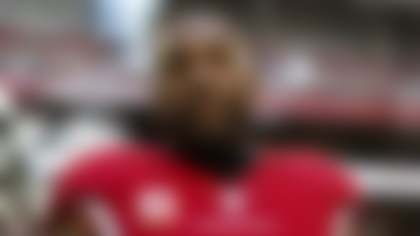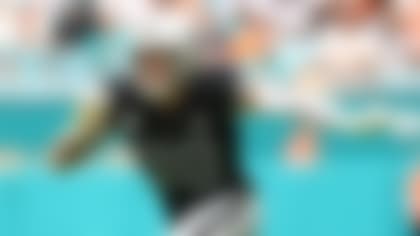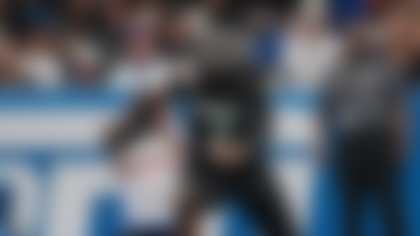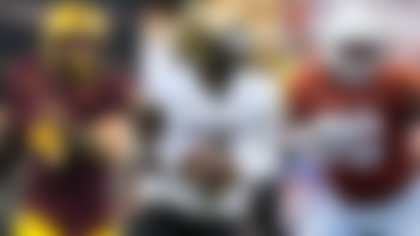What is the NFL's protocol for managing concussions?
It starts long before a player sustains a concussive hit. It begins prior to training camp and continues after the player returns to the field.
Every head injury is different and there is no definitive timetable for each. However, this is the basic template for assessing and managing player concussions based on the latest recommendations from the NFL's Head, Neck and Spine Committee.
BEFORE THE TRAINING CAMP BEGINS
The process begins before the season with team doctors performing examinations to clinically assess functions such as memory, concentration and balance that can be affected by a concussion. Also the doctors evaluate the player regarding how many concussions they have experienced and how long the player needed to recover as well as other medical factors that can affect concussion recovery. Players also fill in a list of current symptoms, including headache, neck pain, fatigue and others as it is important to know what they are experiencing before any concussion standardized baseline concussion tool is utilized.
This history and physical examination information is supplemented with baseline neuropsychological testing, comprehensive tests that assess memory, reaction time, attention span, problem-solving abilities and other cognitive skills. Some neuropsychological tests are computer based such as the ImPACT test -- Immediate Post-Concussion Assessment and Cognitive Testing. and the Automated Neuropsychological Assessment Metrics (ANAM) test developed by the Army. Other neuropsychological tests are standard paper and pencil tests typically administered by a neuropsychologist. Each team has a neuropsychologist to interpret the neuropsychological tests and serve as a consultant to help with this aspect of concussion care.
This preseason assessment process has many benefits. "It's a forum for dialogue to build rapport," Dr. Stan Herring, one of the team physicians with the Seahawks and Seattle Mariners and a member of the NFL's Head, Neck and Spine Committee, told ESPN.com. "The most important thing is knowing what he was like before a concussion."
ON THE FIELD
To assist the medical teams on game day, there is now an "eye in the sky" – a certified athletic trainer sitting in a stadium box who watches the game and television replays to scan the field and look for players with a potential head injury who may require assessment by the medical staff.
Players who are suspected of suffering a concussion are assessed by their team's medical staff. The team physician first reviews a six-item checklist outlining findings that necessitate a player's immediate removal from the game. This checklist includes the more obvious symptoms of concussion: loss of consciousness, unresponsiveness, confusion, amnesia and other concerning symptoms. The team doctor then administers the rest of the sideline concussion assessment tool in order to further assess for concussion. This sideline test includes the same tests performed as part of the pre-season baseline concussion assessment, as well as some additional questions. Like the preseason evaluation, the test measures, memory, concentration and balance. as well as measuring how quickly and thoroughly the player recalls words given to them at least five minutes earlier. As in the preseason examination, the team doctor asks players to name the month, date, day of week, year and time. The additional questions include specific sideline orientation questions that ask players to identify the venue, quarter of game, who scored most recently, the team's previous opponent and whether the team won or lost its most recent game. This process takes about 8-12 minutes.
Beginning this year, a neuro-trauma expert physician unaffiliated with an NFL team will be available on the sideline as an extra set of eyes. He can be consulted by the NFL medical team or NFL player.
NFL regulations require a player diagnosed with a possible concussion to leave the field for the locker room. Medical personnel remain with the player for the remainder of the game. Team physicians determine whether the player's condition is stable enough to send him home -- with instructions that include physical and cognitive rest, avoiding certain medications and alcohol, and a plan for follow up care including phone numbers to call if there are any questions or concerns.
DAYS AFTER THE GAME
The initial treatment is rest, and the team doctors and athletic trainers begin monitoring to see when a player appears to have returned to baseline functioning. Do symptoms return when a player watches practice or when he watches film? Is there return of symptoms with physical activity?
Once symptoms have completely subsided, the player again performs more comprehensive neuropsychological tests interpreted by the team neuropsychologist. There are no pass-fail grades, only additional data for physicians to consider.
If the player is progressing, he would be become eligible for increased physical activity. The workouts would ramp up over a few days if no symptoms occur.
A player feeling normal one day after the game might pass cognitive testing Tuesday and begin a light exercise program, intensify their exercise routine Wednesday, participate in non-contact aspects of practice on Thursday and return to full practice Friday. But if a player has a history of concussions or isn't progressing as quickly as planned, the process moves accordingly.
The medical team increases the exercise regimen to full speed as the player proves he can handle the escalation without incident. Some teams stage controlled contact drills featuring, for example, one lineman blocking another the way they would in an unpadded practice.
"The thing that I think is important here is you don't manage concussions by a calendar," Dr. Herring said. "Some guys may come back in a week. Some guys may come back in six weeks. These steps don't have an expiration date on them. The player's history of injury and other issues come into play."
Once a team doctor signs off on a player's return, the player is evaluated in person by an unaffiliated concussion expert physician approved by both the NFL and NFL Players Association. This unaffiliated expert also must sign off on the player's health before he is allowed to return to play.
"The thinking is that we have done our best work, but an automatic second opinion is built in," Herring said. "We've never had a disagreement, but I would welcome it if we did because we could learn from it. This is a trust issue. We need assurances there is no rush to return to play for any reason."
-- NFL Head, Neck and Spine Committee and Bill Bradley, contributing editor



